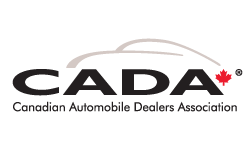When you’re shopping for a new vehicle, safety is always at the top of every shopper’s mind.
After you’ve compared vehicle models online and before you visit your nearest dealership for a test drive, it’s a good idea for buyers to check the crashworthiness of a vehicle before committing to a purchase.
Transport Canada sets safety standards for the design, construction and importation of the many types of motor vehicles that share our roads. They conduct crash tests for low speed vehicles – a different class of vehicle from the passenger cars we see on the roads today. Transport Canada also issues recall notices for any vehicle or vehicle part deemed unsafe by manufacturers.
The Insurance Institute for Highway Safety and the Highway Loss Data Institute (IIHS-HLDI) rates vehicles of almost every make and model based on how well a vehicle can protect its occupants from “good” to “poor” and conducts rigorous crash tests.
The IIHS-HLDI database goes back decades, so it’s a useful resource if you’re in the market for a used car as well. The IIHS-HLDI evaluates vehicles on two important aspects – how well a vehicle protects its occupants in a crash and the effectiveness of the vehicle’s crash avoidance technology.
In today’s auto world, safety is a top priority for all models, and vehicle manufacturers aim to get that “good” rating during crash tests.
When people think about crash tests, the first image that comes to mind is a front impact test – a vehicle hitting a wall with a crash test dummy behind the wheel.
While these tests are meant to test the most extreme accident, there are several different types of crash tests, depending on how the vehicle is impacted, and they all have a different purpose.
Moderate overlap tests, for example, are meant to replicate a scenario if the front left-hand side of the vehicle were to collide with another vehicle or barrier. Roll-over tests are meant to test the pillars of the vehicle’s roof. Side crashes and even head restraints are also put to the test.
New for 2017 were headlight tests for range and clarity during dusk and night time driving. Differences in bulb type, headlight technology and how the lights are aimed all affect the amount of useful light supplied. Not all headlights perform their job equally so these are important test results to look up, especially given the high number of fatal crashes that occur at night.
In total, there are nine different tests that a vehicle is put though before given their rating, and while these crash tests are conducted in a very controlled environment, they are meant to reflect real-life driving scenarios.
The IIHS-HLDI also compiled a database for driver death rates by make and model to compare to the relative safety of vehicles outside of the crash test site.
Vehicle structure and safety restraints determine crashworthiness, and most vehicles today are equipped with anti-collision technology to make drivers safer than ever before. Systems like forward collision warning, lane departure warning, side assist view and adaptive headlights are now available in new vehicles. Remember to ask your new car dealer about these safety systems if you’re curious about how they work to save lives.
If you’re looking for a second rating, the National Highway Traffic Safety Administration (NHTSA) also conducts crash tests and has a database of ratings.
The NHTSA, along with the IIHS-HLDI, both predict that if all vehicles in the U.S. were to be equipped with anti-collision system, there would be a 6 per cent reduction in crashes with injuries and a 30 per cent reduction in fatal accidents.
To learn more about safety developments in the auto industry, join us at the 2018 Vancouver International Auto Show.
The 98th Vancouver International Auto Show returns to the Convention Centre West from March 28 to April 1, 2018. For more information on the Show and to purchase tickets, visit www.VancouverInternationalAutoShow.com.
Blair Qualey is President and CEO of the New Car Dealers Association of BC. You can email him at [email protected].









